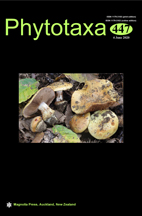Abstract
Three species of Lepiota sensu lato from China are described and illustrated based on morphological characters and molecular evidence. Echinoderma flavidoasperum and Lepiota omninoflava are new to science, while Lepiota echinacea is newly reported from China. Echinoderma flavidoasperum is characterized by a yellow pileus, nearly smooth stipe that discolors light red when bruised, and subcylindrical basidiospores. Lepiota omninoflava, so far only found in the tropics, is characterized by the yellow basidiomata, ellipsoid basidiospores and the absence of cheilocystidia. All three of the Chinese species are discussed and placed within a phylogeny based on the internal transcribed spacer (ITS) region, the large subunit (LSU) of the ribosomal DNA, the translation elongation factor 1-α (tef1-α) and the second largest subunit of RNA polymerase II (rpb2).

